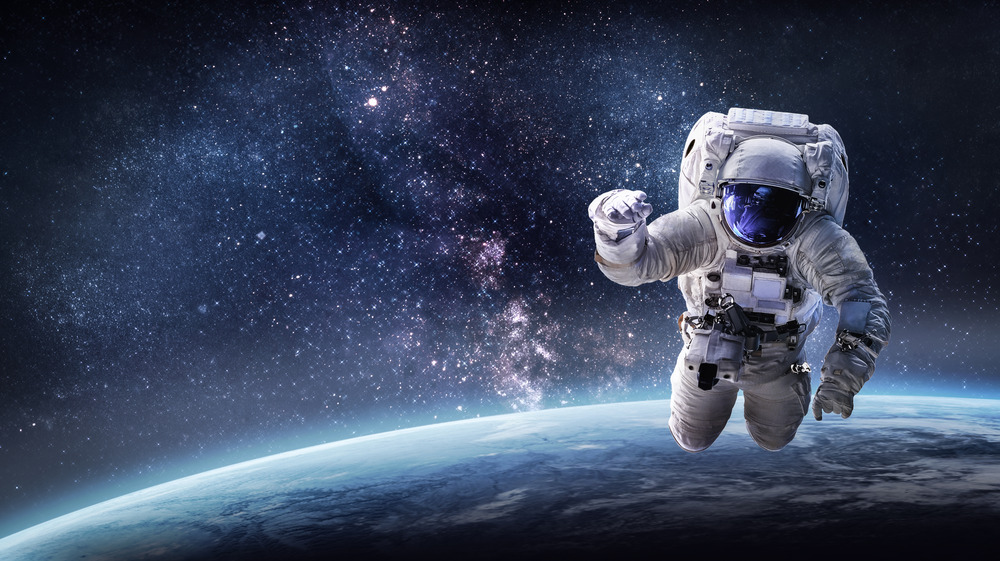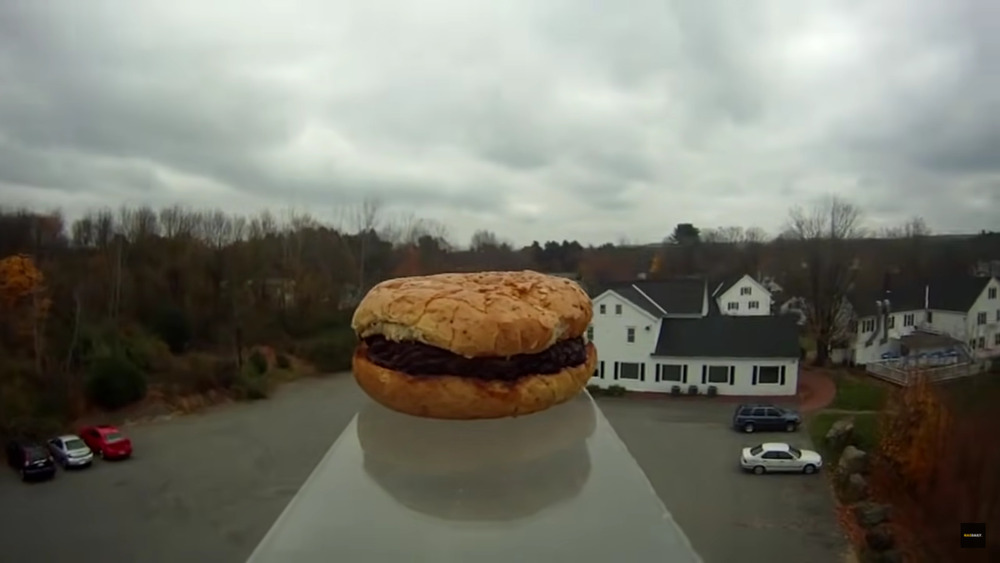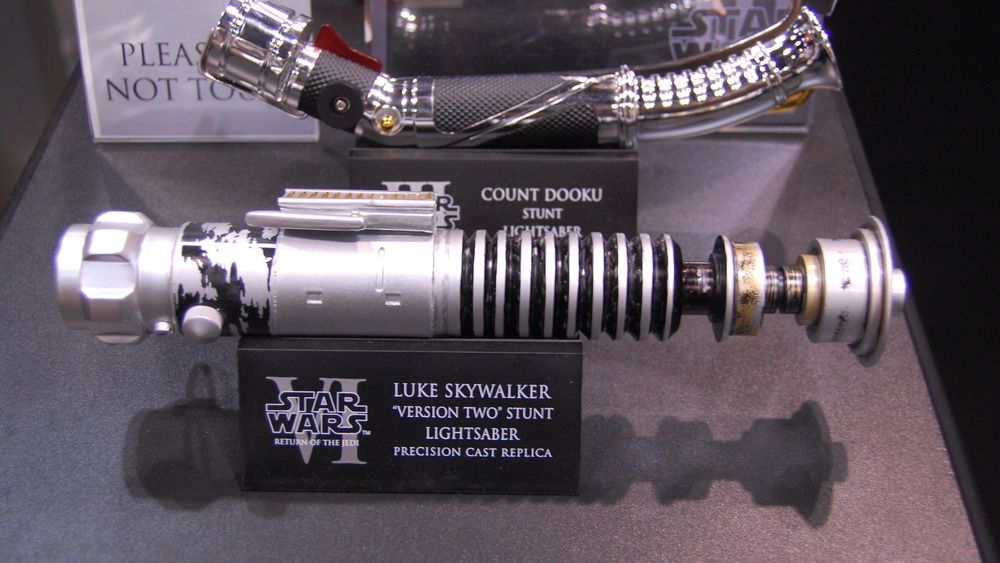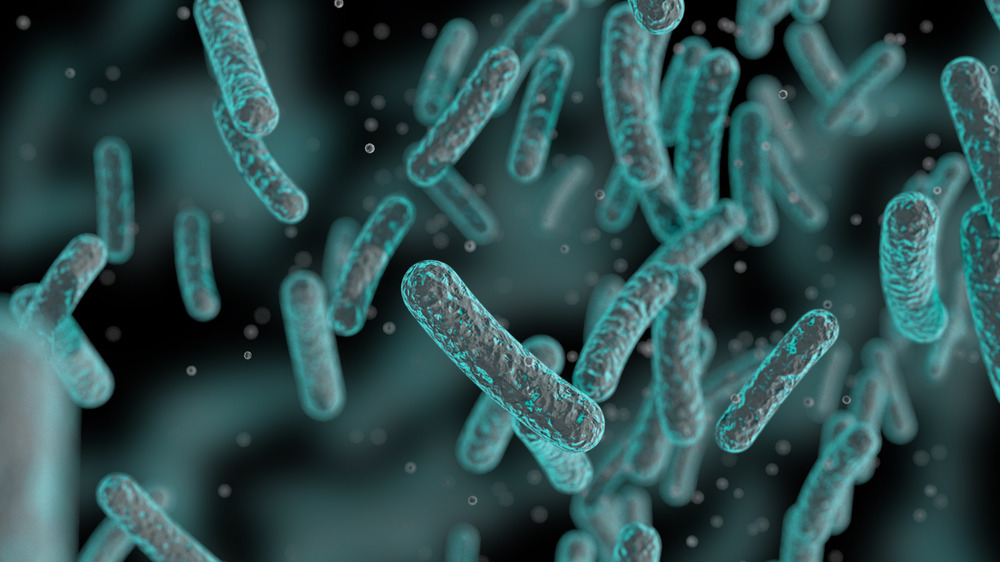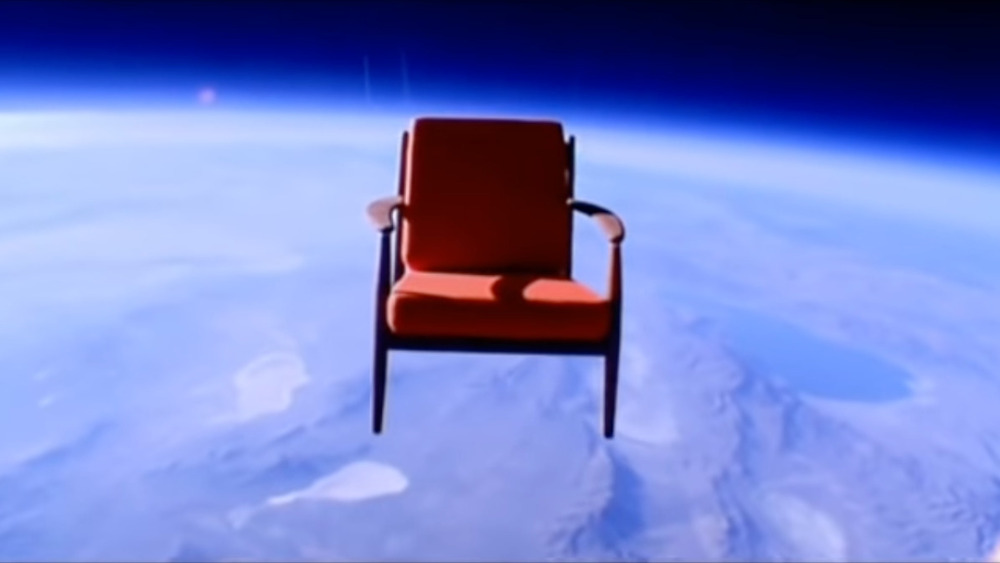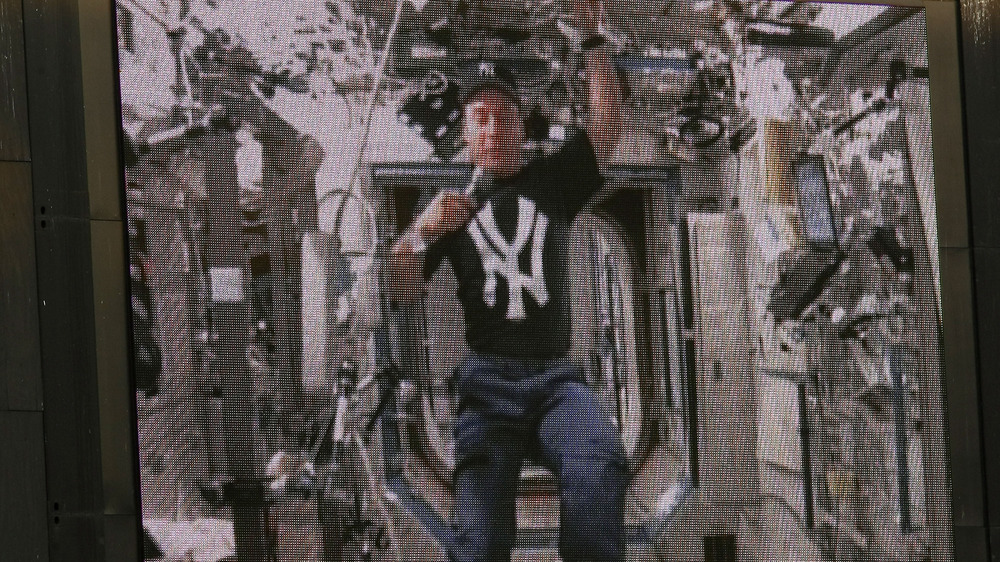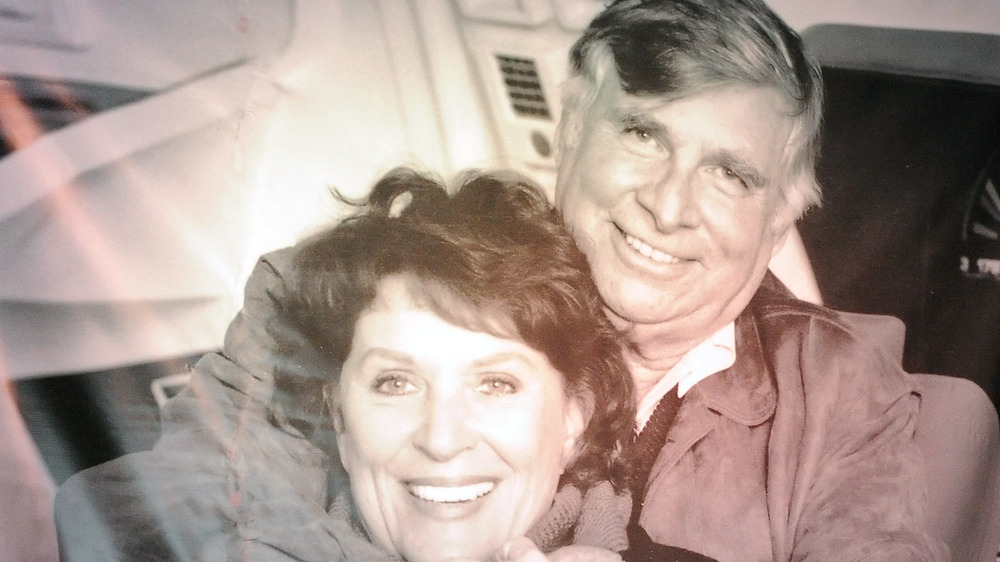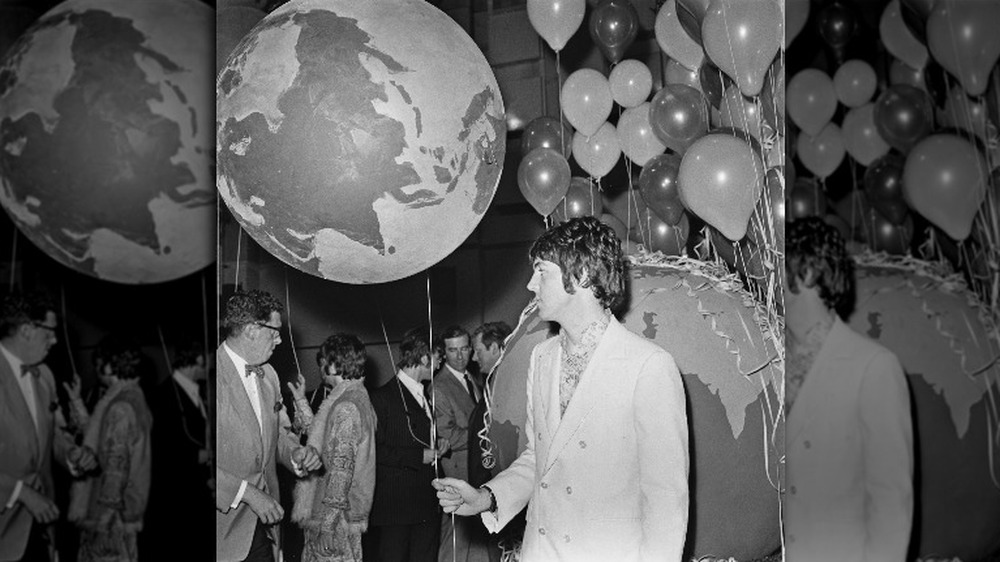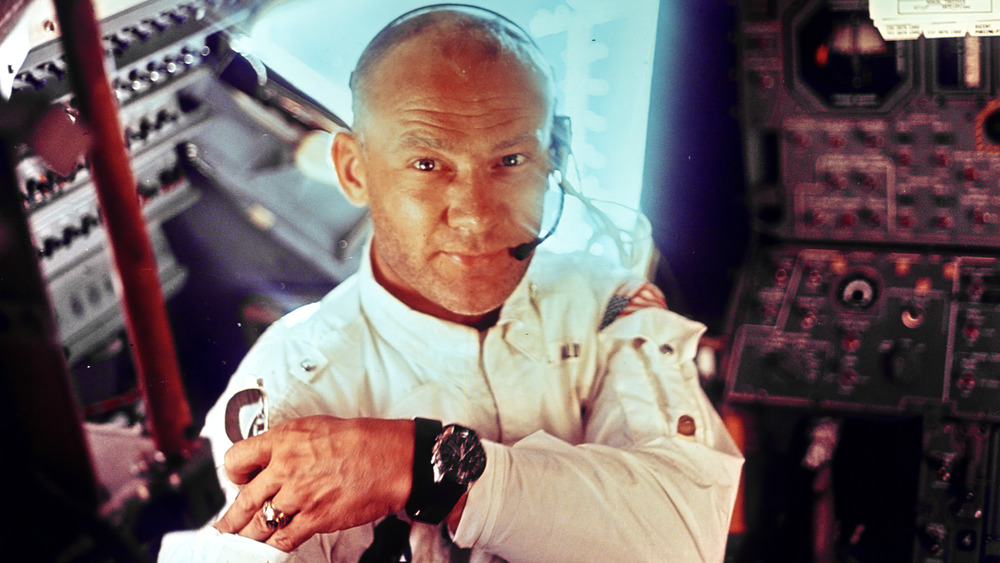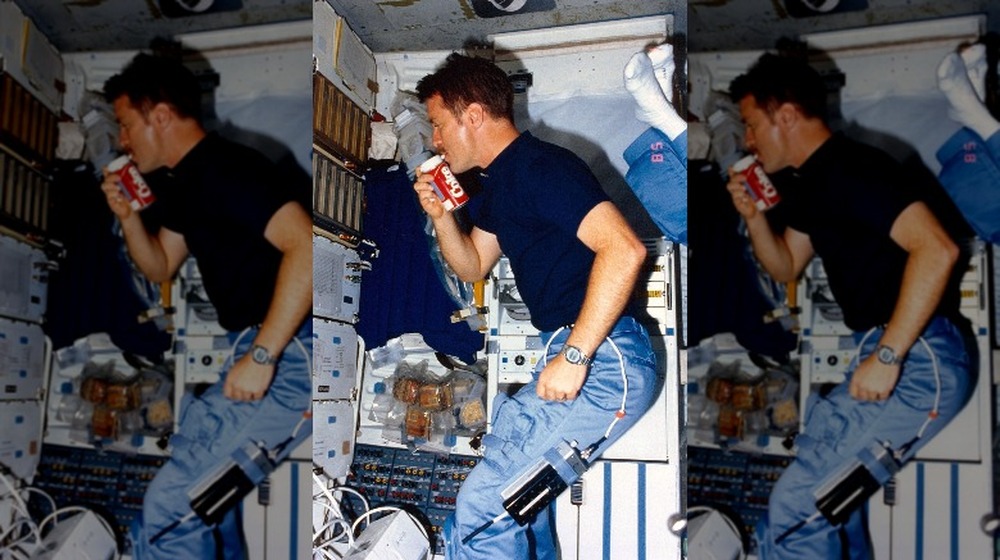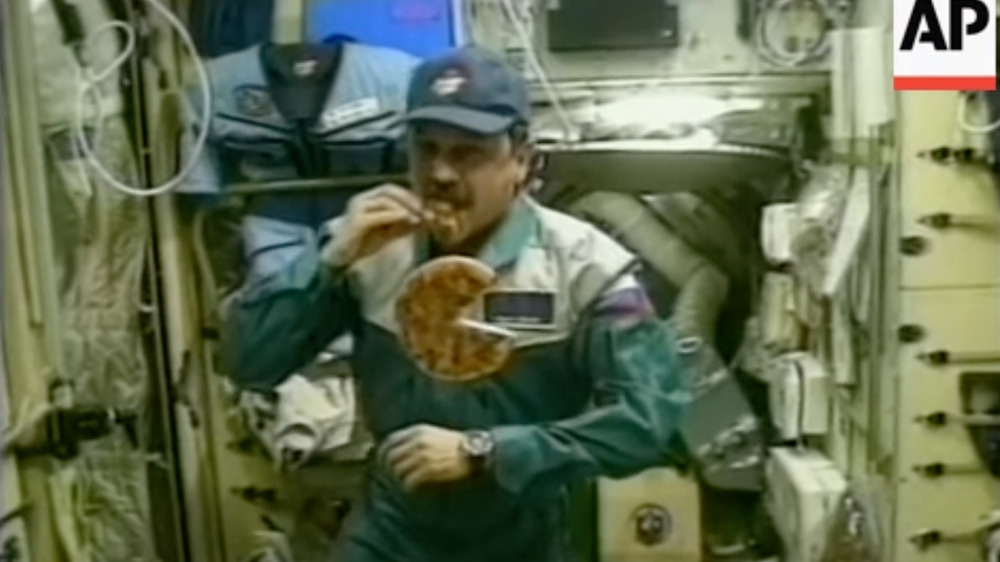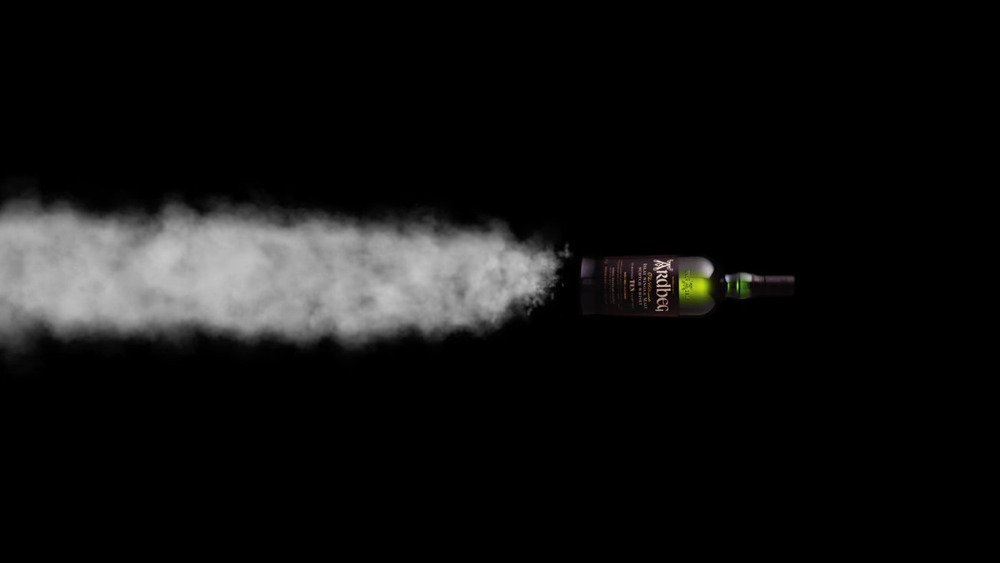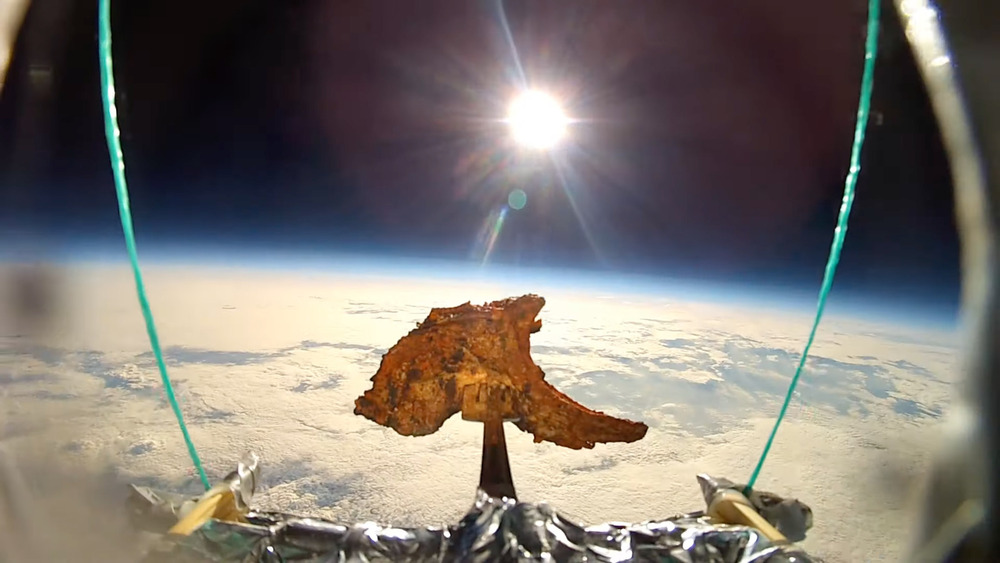Bizarre Things We've Sent To Outer Space
The mystery of outer space has intrigued humans for centuries and centuries, with countless scholars and scientists trying to explore the world beyond this tiny planet and discover the truths and secrets of this massive universe. But sometimes, it's less about what can be found out in outer space and more about what can be sent there. Almost as big as our fascination with the contents of space is our obsession with sending into space a piece of something that is so familiar here on Earth.
When it comes to all the possible things that could be launched up into outer space, it goes without saying that the sky is really not the limit at all. From a lamb chop to dirt from a famous stadium, the list of things that have made their ascent into the cosmos gets more peculiar by the day. Here are some of the most bizarre things sent to outer space!
Harvard students sent a space burger
What's a group of Harvard students to do when school's gotten a bit repetitive? Send a hamburger into space, of course. Because, well, why not.
According to ABC News and The Huffington Post, in 2012, five Harvard students spent two weekends planning and then succeeding in sending a hamburger into space as part of what they called "Operation Skyfall," a stunt they came up with as a "purely fun project." They reached out to local burger shop, B.good burger, for sponsorship, with the owner excitedly agreeing and telling his secretary to write up a check for the students immediately. Then, armed with nothing but the burger, a GoPro, smartphone, and a 600-gram weather balloon, they sent the first hamburger into space.
Admittedly, at this point, the B.good burger was no longer edible. "They had gotten the burger two days before, varnished it, super-glued the layers together and screwed it to the pedestal." Following an ascent of 30,000 meters, or 19 miles, that took two hours, the burger made its way down back to earth for about an hour before getting stuck in a tree 130 miles north of Boston. While the team tried to shoot it down with a bow and arrow, it was eventually a storm that knocked it back to the ground and helped them recover the footage of the first hamburger in space.
Return of the lightsaber
It's not everyday that one gets to see an iconic space weapon return to where it originated, so it only makes sense that the special mission involved a star-studded send-off. According to Collect Space and Wired, in October 2007, Luke Skywalker's original lightsaber prop from Return of the Jedi was launched into space on the Discovery's STS-120 mission in honor of the 30th anniversary of Star Wars. But just as exciting as the lightsaber's ascent into space was its on-earth journey from Lucasfilm in California to the Space Center in Texas.
Getting the iconic prop over to NASA's Johnson Space Center in Houston became a whole ordeal that attracted special guests from all over. As described by Space.com, the one and only Chewbacca, accompanied by Boba and Jango Fett, handed the lightsaber over to officials from the space center in a public ceremony at the airport in Oakland. From there, the lightsaber traveled to Houston, being escorted by Stormtroopers and greeted by R2-D2 at Hobby Airport, before embarking on its 6-million mile space journey.
Sickening results from salmonella in space
You'd think that disease-causing bacteria would be on the list of things not to send up to an enclosed station floating in the middle of outer space. But in the name of science, that's exactly what NASA did in 2006 and 2008 when they sent salmonella bacteria to the International Space Station, according to NASA Science and Space.com. Hoping to see if there was any difference between "Earth salmonella" and "space salmonella," scientists were both fascinated and worried over the results.
Turns out, salmonella "cultured in the microgravity environment of orbit" were notably more virulent than the salmonella culture on Earth. In other words, as told by The Guardian, through experiments with groups of mice, the animals that were fed the "space salmonella" were three times more likely to die from the bacteria. Researchers have hypothesized that this is because "space travel tricks salmonella into behaving as if it is in the human gut...a mechanical phenomenon having to do with 'fluid shear.'"
As interesting as the results were, the experiment at the time opened up concerns about fighting infections in space. Luckily, scientists had found at least one way to counteract space travel's effect on salmonella. By growing the bacteria in a medium that had "higher concentrations of five ions — potassium, chloride, sulfate, magnesium, and phosphate — the virulence of the bacteria due to spaceflight no longer went up!"
The armchair floating through space
There's nothing quite like sending something bizarre into space in order to capture the attention of your customers. Over the years, brands have undertaken the challenge of sending random objects into the stratosphere as a promotional stunt, and Toshiba was no exception in 2009. In brainstorming ad ideas for its new REGZA SV LCD TV series, the company evidently decided to appeal to the resident couch potatoes with its Space Chair advertisement.
As described by Trends Updates, the campaign took an average armchair and filmed it as it became the first chair to enter space on a helium balloon, reaching a height of 98,268 feet above sea level. The ascent took 83 minutes, while its (sadly destructive) fall took a quick 24 minutes. The result was pretty cool visuals of a chair floating above the earth and in space, likely suggesting that the viewing experience on the new television, which was apparently "Toshiba's first with LED backlight and local dimming," was out-of-this-world amazing, according to Engadget.
Literal dirt from Yankee Stadium
In 2008, among other mementos of his all-time favorite team, astronaut and ultimate Yankees fan Garrett Reisman brought along literal dirt from the pitcher's mound at Yankee Stadium when he embarked on the space shuttle Endeavour's STS-123 mission, according to Christian Science Monitor. Reisman's status as a Yankees fan also led to him making baseball history when he "threw out the ceremonial first pitch via video from the International Space Station prior to the start of the Yankees' game versus the Boston Red Sox on April 16, 2008" in what was Yankee Stadium's first pitch from space.
Beyond bringing a bit of earth with him up to space, Reisman made it impossible to question his loyalty in baseball by taking "Joe Torre's 2000 World Series ring, Whitey Ford's jersey, Bernie William's glove," and more up with him on the journey, as listed on his official website. Playing into the Yankees-Mets rivalry, astronaut Mike Massimino took it to another level when he brought a home plate from Shea Stadium into space.
The ashes of Star Trek creator Gene Roddenberry
As a man with a fascination for the cosmos, it would make sense for Star Trek creator Gene Roddenberry's life-long dream to be to go to space. While he died before he was able to make the trek, his wife, Majel Barrett Roddenberry, made it her personal mission to help him fulfill his dream, according to MSN. At her request, a portion of Gene's ashes was brought into space by NASA astronaut James Wetherbee on the Columbia in 1992. The moment then became historically known as the first ever "space burial."
But that 1992 journey wouldn't be the last time Gene's ashes were sent into space. In 1997, memorial spaceflight company Celestis launched The Founders Flight, which propelled the ashes of Gene and 23 others into orbit on "the world's first private memorial spaceflight," as described on its official site. The ashes orbited the earth for five years before descending and re-entering the atmosphere in 2002.
As told on the Celestis blog, part of Majel's agreement in sending Gene's ashes onto The Founders Flight came with the promise that Celestis would send both her and her husband's ashes together on a planned deep space mission, so that she could "spend eternity traveling through space with Gene." Keeping their promise, Gene and Majel Roddenberry's ashes are expected to be sent by Celestis into deep space in late 2022 on "one of few spacecrafts infinitely orbiting the sun" in "a truly permanent tribute."
The Beatles sing Across The Universe
On Feb. 4, 2008, NASA beamed a song into deep space for the very first times, according to its official website. The song of choice couldn't be more perfect, with The Beatles' "Across the Universe" being sent exactly where its title suggested, at a speed of 186,000-miles-per-second. The date of the transmission marked the 40th anniversary of the day the song was recorded, with Paul McCartney excitedly sharing his congratulations to the space agency, saying "Amazing! Well done, NASA! Send my love to the aliens. All the best, Paul."
While this was the first time a Beatles' song was sent "across the universe," it was far from the first time a track by the British band was played in space. In a concert that was transmitted to the International Space Station in 2005, McCartney performed "Good Day Sunshine," and Beatles' songs like "Here Comes the Sun" and "A Hard Day's Night" have been played as a wake-up call for the astronauts on the International Space Station.
Buzz Aldrin's secret Holy Communion on the moon
In July 1969, astronauts Neil Armstrong and Buzz Aldrin walked on the surface of the moon in an exhibition that captured the attention of the world. But what was kept hush about the moonwalk involved something that Aldrin had brought along with him from Earth. According to The Guardian, after getting special permission from his church, the astronaut took a small chalice and communion wine and wafer with him to space and the moon, where he performed a communion service for himself. Describing his thoughts on the lunar ceremony, Aldrin wrote in a Guideposts article, "It was interesting to think that the very first liquid ever poured on the moon, and the first food eaten there, were communion elements."
According to Snopes, while the communion was reported by the press, NASA declined to broadcast the ceremony and requested for Aldrin to keep his comments general. The decision is thought to be in observance of the separation of church and state, following a controversy after the Apollo 8 crew read aloud the book of Genesis. Later, in his 2009 book, Aldrin once again reflected on that service, expressing some regrets. "Perhaps, if I had it to do over again, I would not choose to celebrate communion. Although it was a deeply meaningful experience for me, it was a Christian sacrament, and we had come to the moon in the name of all mankind — be they Christians, Jews, Muslims, animists, agnostics, or atheists."
Coca-Cola spent $250,000 designing a space-friendly coke can
In the so-called "Space cola wars," brands Coca-Cola and Pepsi faced off to have their drink be the first in space in the 1980s, according to MSN. But what they sent up weren't the standard soda cans us earthlings are used to. With the way liquids work in microgravity, cracking open a can of cola could rapidly turn into a huge carbonated mess, so the companies had to come up with new space-friendly cans.
Coca-Cola was the first to approach NASA about this idea, with Pepsi following shortly after. With a head start, Coca-Cola invested $250,000 to create a Coke-branded can with a pressurized bladder and drinking spout. Pepsi, who had entered the race late, "modified an existing design that it said originally cost $14 million to develop," resulting in what was very similar to spray cheese or whipped cream cans.
The two cans were successfully tested by the astronauts in 1985, with both the can mechanisms and the taste of the sodas being just fine. Apparently, though, carbonated drinks and space aren't a good combo for the stomach, according to astronaut Tony England. "...if there's no gravity, the bubbles don't come up...So here you are with this stomach full of carbonated beverage, with the gasses kind of comfortably staying there." Whether it was an effort to avoid the "wet burps" sodas brought on or not, according to the Smithsonian Institute, NASA ultimately never added either soda to the shuttle food pantry.
Anyone up for pizza?
These days, getting your favorite foods delivered straight to your home is easier than ever. A few taps on your phone and you could have a steaming, fresh pizza at your door just in time for dinner. But same-day delivery is probably a bit harder when your home is the International Space Station (ISS), and even more so back in 2001. According to Business Insider, that was the year that Pizza Hut became the first chain to fulfill a delivery order to space.
The whole thing was a marketing campaign that cost the pizza chain over $1 million and compulsory 60-day tests for their food. To make their pizza perfect for the astronauts, their recipe had to be tweaked. As told by ABC News, "the pizza was seasoned with extra spices, especially salt, since it's known that taste buds become a little dulled in space. And although pepperoni is the chain's most popular topping, the company settled for salami since pepperoni did not preserve well during the required 60-day test: it grew mold."
As for the person who opened the door for the delivery man, so to speak? That honor went to Russian cosmonaut Yuri Usachov, who was filmed munching on his slice while the rest of the pizza floated in front of him. Ironically, despite Pizza Hut being an American chain, NASA has strict policies regarding advertisements, so none of the American astronauts on the ISS were able to get a taste of the pie.
The first whisky aged in space
Would whisky aged in space have tasted different than whisky aged normally on Earth? That's what Ardbeg Distillery and NASA hoped to find out when they launched an experiment in 2011 that involved sending up a vial of single malt scotch whisky and wood shavings from an oak cask (in place of the typical cask it would age in on Earth) to the International Space Station, as described by The Verge. The whisky was the first to be sent into space and spent almost 1,000 days orbiting the earth in microgravity conditions, from September 2011 to September 2014, according to Inside the Cask.
When the space whisky made its way back to familiar ground, it made a homecoming tour of the Earth and was subject to all kinds of tests for nearly a year before someone actually sat down and did the ultimate taste test, as reported by Food & Wine. Evidently, aging whisky in space does result in dramatic differences, revealing alien flavor profiles that Ardbeg director Bill Lumsden claims he had never encountered here on Earth. As published by the BBC, the space whisky's intense aroma "had hints of antiseptic smoke, rubber and smoked fish, along with a curious, perfumed note, like violet or cassis, and powerful woody tones, leading to a meaty aroma." Taste-wise, it was much smokier and akin to smoked fruits or meats, while the aftertaste had hints of "wood, antiseptic lozenges and rubbery smoke."
The author of Meatspace took the title to heart
In 2014, British novelist Nikesh Shukla had just published his second novel, titled Meatspace, and needed a clever campaign to promote it, according to Grub Street. Taking the unique title of his book literally, the author and his friends stopped by an East London Punjabi restaurant where they ordered a tandoori-cooked lamb chop with a plan to send the meat piece right up into outer space.
As described by SBS News, besides the lamb chop, the effort involved little more than a GoPro and a weather balloon, which were all attached together before being launched into space. The grilled star of the stunt reached 82,000 feet before the weather balloon burst after 95 minutes. The freezing temperatures ended up disabling the GPS, so it took Shukla and his friends five months before they were able to recover the GoPro from a farmer some 80 miles from where they launched it. The result of the whole endeavor? Bizarre, yet stunning footage of a lamb chop ascending up into the clouds and floating above the earth in space.
